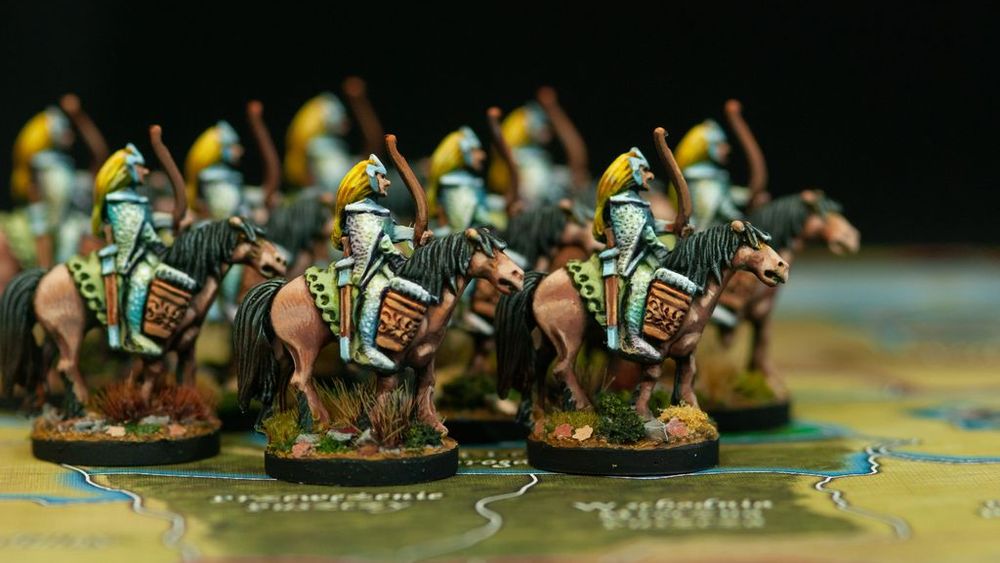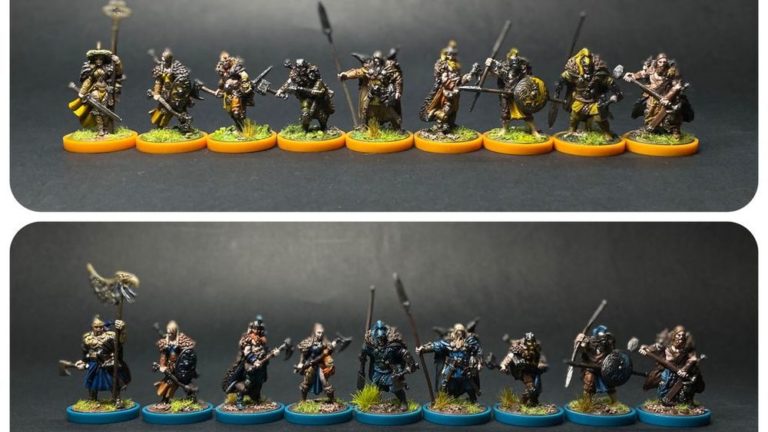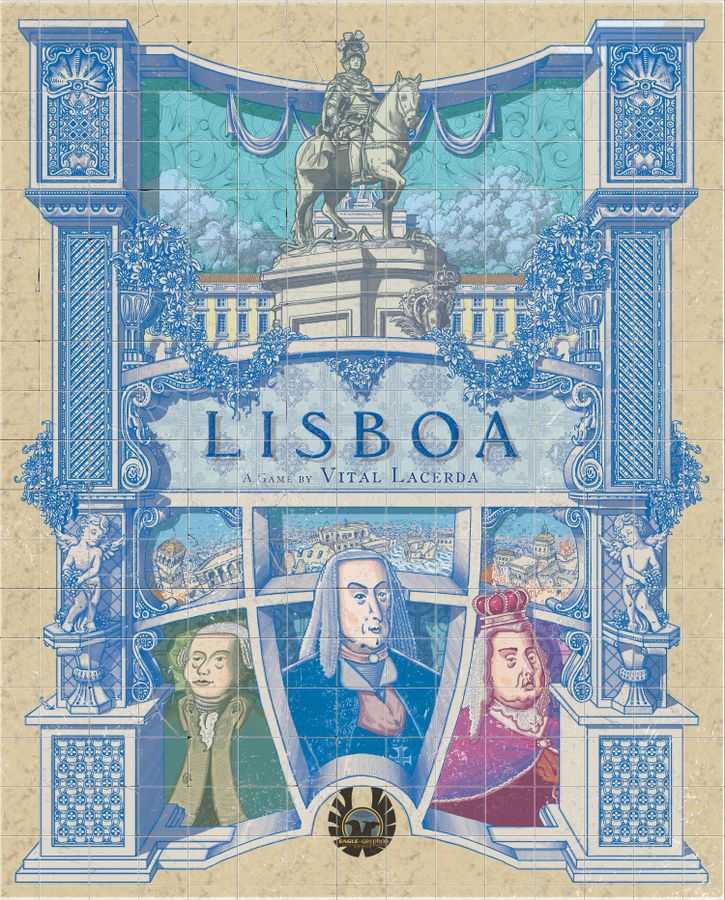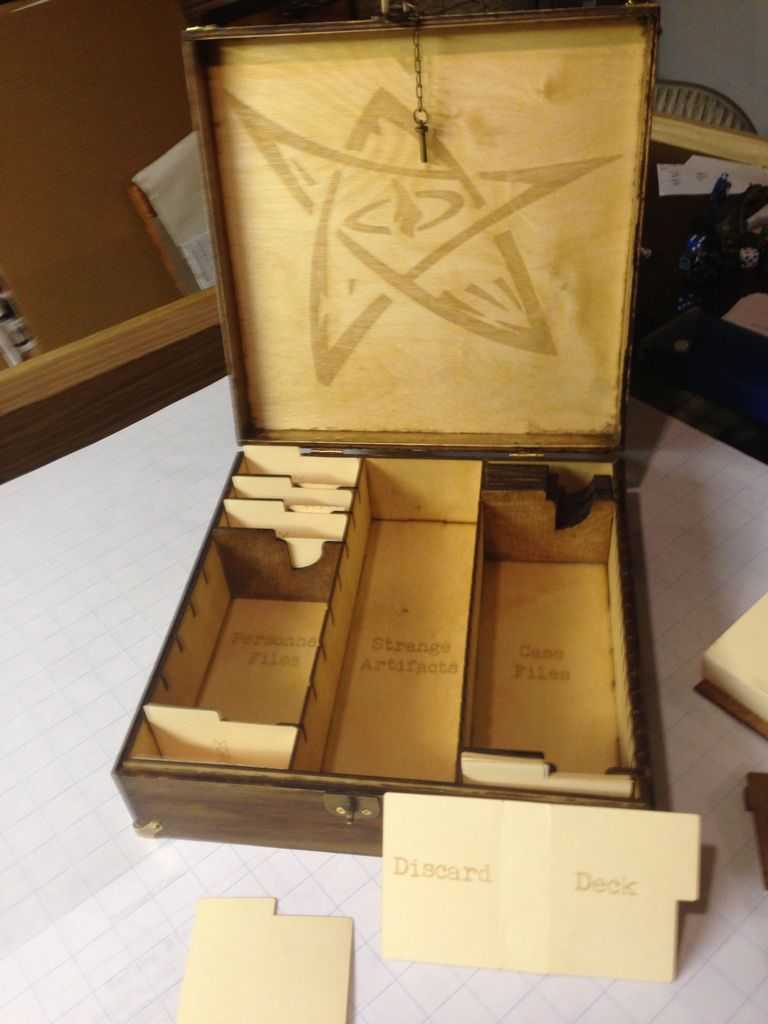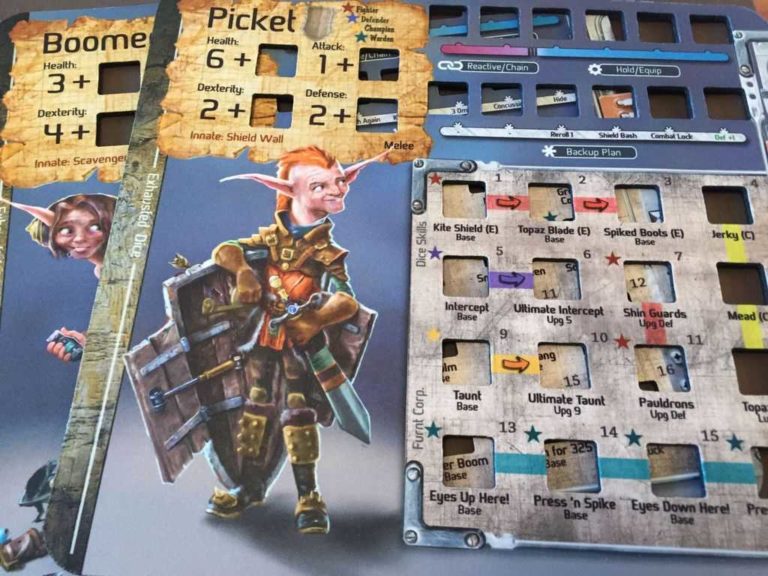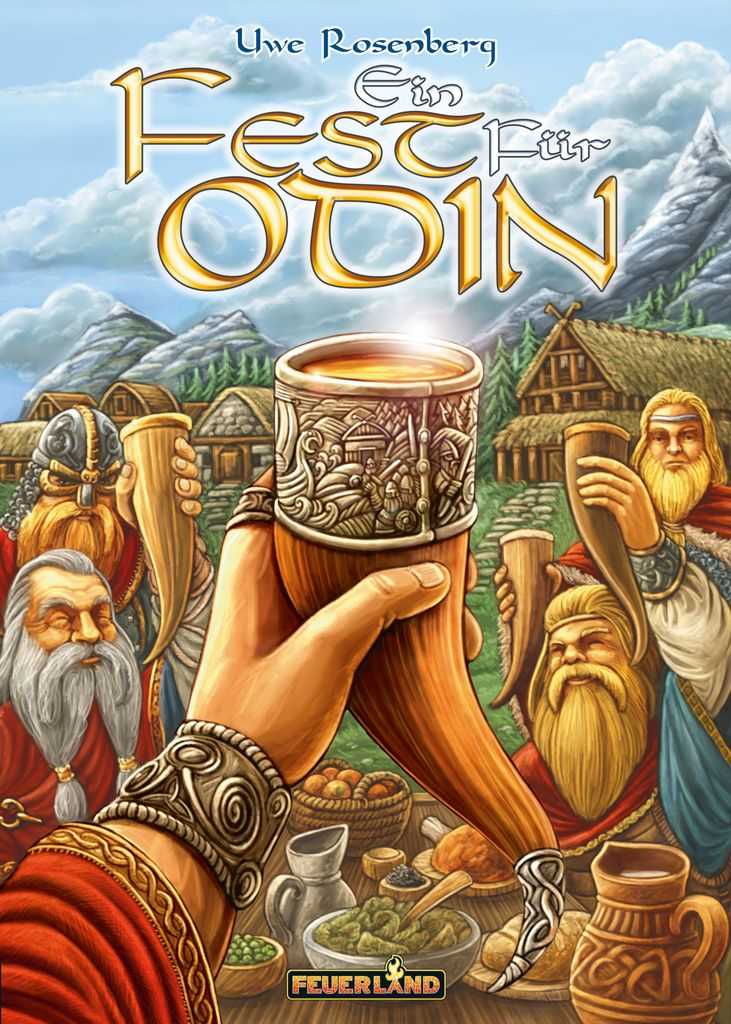War Of The Ring: Second Edition – Board Game Review
War Of The Ring: Second Edition – Board Game Review
Oh, my friend, let me take you through the magical and perilous terrain of Middle-earth – where every game night winds up being an epic tale. War of the Ring: Second Edition is more than just a game; it’s a devout tribute to J.R.R. Tolkien’s universe, package-delivered to your tabletop with care and intricacy. As a seasoned board gamer and a self-proclaimed Tolkien aficionado, I’ve ventured through my share of Middle-earth renditions, but this game – this is a different beast. It’s strategy, it’s chance, it’s a delicate dance of wits and luck – all swirled into a maelstrom of cardboard and plastic might.
Key Points:
- War of the Ring: Second Edition is a deeply thematic and intricate board game set in J.R.R. Tolkien’s Middle-earth.
- The game offers a balance of strategy and chance, providing a rich and immersive experience for players.
- The second edition features updated rules, enhanced components, and streamlined gameplay for a more refined experience.
- Players can take on the roles of the Free Peoples or the Shadow Armies, each with unique strategies and objectives.
- The game’s components and artwork are of high quality, capturing the essence of Middle-earth and adding to the immersive experience.
- The game’s replayability is high, with varied scenarios and outcomes ensuring each session feels fresh and unique.
- Expansions like Lords of Middle-Earth and Warriors of Middle-Earth add depth and variability to the gameplay, further enriching the experience.
Remember the time when we lingered over the game late into the night, our faces illuminated by candlelight, as if in the Council of Elrond itself? That breathless moment when Frodo slipped past a Shadow Army, or the collective groan when a critical stronghold fell? This game churns out moments like those with a careless sort of grace that only deepens your respect the more you play. And with the second edition, it’s like they’ve reforged the fabled sword Narsil; it’s sharper, more refined, and ready to carve out a legend of its own on your game shelf.
Navigating through War of the Ring’s rules can be as challenging as Frodo’s journey itself. Yet, through perseverance and countless plays, it never fails to reward you. Every session is a new narrative, rich in strategy and suffused with enough thematic depth to sink into Tolkien’s world for hours. Just as with the One Ring, the myriad rules and mechanics become both a burden and a source of immense power, offering a multi-layered experience that evolves each time you play.
Immersing into Middle-earth: An Overview of War of the Ring: Second Edition
When you pry open the box of War of the Ring: Second Edition, you’re not just setting up a game – you’re reconstructing the heartbeat of a fantasy realm that has enchanted millions. Every inch of the board is a call to adventure, a canvas painted with the potential for allegiances and betrayals, for tiny battles and sweeping wars that echo the clash of destiny and free will. It’s like opening a tome of ancient lore; the weight of the story it carries is palpable, and the anticipation of unwinding its tales is thrilling.
The Essence of War of the Ring: Second Edition
At its core, War of the Ring: Second Edition isn’t just about rolling dice or amassing armies; it’s about the ebb and flow of hope and despair in the face of overwhelming odds. As a player, you might lead the tenacious Free Peoples, striving to fend off the encroaching darkness while guiding the Fellowship towards Mount Doom. Or perhaps you’ll command the relentless forces of Sauron, spreading corruption and waging battles across Middle-earth to reclaim the Ring and cast the world into eternal shadow.
The game encapsulates the grandiosity of Tolkien’s epic in a way that feels close and personal, like hearing a tale whispered directly into your eager ear. Whether you’re a grizzled commander of many battles or a wide-eyed novice to this world of intricate war games, War of the Ring: Second Edition embraces you, teaching its secrets in whispers of shifting allegiances and hidden movements, all woven into this tapestry of a cherished narrative.
War of the Ring: Second Edition is about the ebb and flow of hope and despair in the face of overwhelming odds, encapsulating the grandiosity of Tolkien’s epic in a close and personal way.
What’s New in the Second Edition?
Ah, the treasures laid out in the Second Edition! When I first lifted the lid off this box of wonders, even I, with so many game nights under my belt, felt that spark of discovery anew. There’s the updated rulebook that reads like a charter of ancient lore, guiding you with clarity so each rule becomes a stepping-stone to deeper strategy. And then, bolstering the gameplay are new cards and mechanics, adding layers to your decisions like the dense histories of Middle-earth itself.
The components – oh, the components! The sturdy, weighty figures represent legions of your favorite heroes and vilest fiends in eye-catching detail. The game’s miniatures have gotten a makeover, gracing the battlefield with more than just functionality; they carry the essence of legend in their sculpted forms. And let us not forget the cards – the artwork, the feel, the way they weave the subtle threads of strategy through your fingers like strands of Elven silk.
Could we talk about the streamlined gameplay? Every session is now a smoother sail down the Anduin, with tweaks and refinements that clarify ambiguities we’ve stumbled on before – remember when you tried that bold move with the Ents, and we debated over the interpretation for what seemed like an age of this world? Those days are blessedly behind us. The Second Edition is a connoisseur’s blend of gameplay and lore, aged to perfection, especially for those who’ve been trailing these paths since the First Edition days.
Delving into the Gameplay Mechanics
As you delve into the mechanics of War of the Ring: Second Edition, you’re embarking on a voyage through a game design that is a tapestry of strategy and chance, woven together with a craftsman’s touch. There’s a beauty in its complexity, a reigning chaos amid its order, asking players to strategize, to adapt, to outthink and sometimes just plain out-luck their opponent.
The Strategic Depth of War of the Ring
The strategic depth of War of the Ring is as endless as the depths of Moria. You could play as the Free Peoples, and every maneuver feels weighted with the destiny of Middle-earth. As the Shadow Armies, you’re the rising tide of darkness, and every move is heavy with ominous power. Each choice, from army placement to Fellowship progression, is a gambit in a larger game of chess, yet one where fate can also sway the outcome.
What many people like most is the intricate layering of strategies. War of the Ring offers a sandbox of possibilities where battles are just the beginning. Politics, diplomacy, and even the timing and path of the Fellowship itself can tip the scales. It’s this balance of planning and adaptation, of grand strategy and small critical decisions that conjures a thrill each time the board is laid bare.
Just think back on our game nights, the way our strategies evolved as the evening waxed on – how a quiet defense could suddenly, with the flash of dice, become a daring, all-out offensive. The War of the Ring dances on these moments, turning the fortunes of war on the head of a pin – or should I say, the roll of a die.
The strategic depth of War of the Ring offers a sandbox of possibilities where battles are just the beginning, with intricate layering of strategies that conjures a thrill each time the board is laid bare.
The Role of Chance and Skill
Yet, for all its strategic depth, War of the Ring does not shy away from the role of chance. Dice rolls infuse the game with tension, the thrum of uncertainty that underlies each clash of armies or shadowy pursuit of the Ring. But with chance comes the element of skill in luck mitigation – the sagacious player will find ways to bend the whims of chance ever so slightly to their favor.
Players with a shrewd sense of risk and reward shine in this environment, as they navigate the uncertainties with prepared contingencies and flexible tactics. It’s knowing when to push your luck with the Fellowship, and when to hold back, when to go all-in on a military assault, or when to feign weakness while you prepare a deadly trap. The interplay of chance and skill in War of the Ring is a mesmerizing dance, one that keeps both novice and veteran players on their toes, learning and evolving with every playthrough.
The Components and Artwork
Entering the realms of War of the Ring: Second Edition is to step into an art gallery of fantastical proportions, where every piece on the board tells a story, and the game’s visuals alone can transport you into the heart of an epic saga.
Analyzing the Quality of Game Pieces
The quality of the game pieces in War of the Ring is nothing short of artisan craftsmanship. From armies to eagles, from stronghold fortifications to the Fellowship itself, every figure is sculpted with a keen eye for detail that honors the source material. The tactile sensation of moving these pieces feels ceremonial, as if every move stitches your actions into the fabric of an ongoing Middle-earth tapestry.
How can we not wax poetic about the way these pieces come together on the board? It’s like watching a living map – the rise and fall of nations inscribed in plastic and resin. They beckon your inner tactician, challenging you to use them wisely, deftly, as they turn inanimate forms into characters of a journey bigger than any one player.
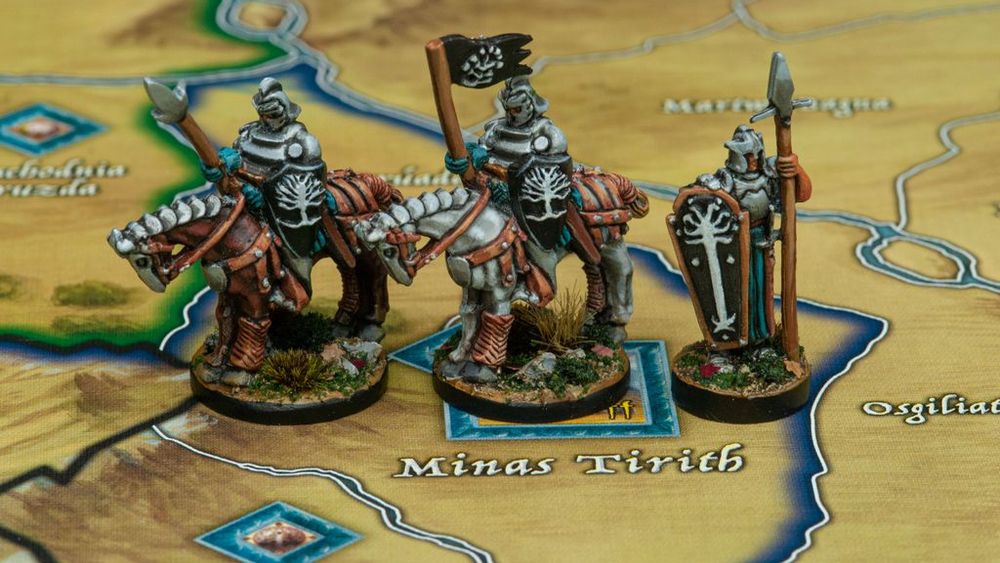
The game pieces in War of the Ring are meticulously crafted with an attention to detail that brings the world of Middle-earth to life on the game board.
The Artistic Interpretation of Tolkien’s World
The resplendent artwork of War of the Ring speaks volumes, weaving visual stories that could fill the halls of Minas Tirith with their vivid detail. Illustrator John Howe’s touch brings the illustrious scenes and characters to life, each card a window into the mythic past of Middle-earth. There’s the map, sprawling across your table, a testament to Tolkien’s sprawling epic, its geography an open invitation for conflict and adventure.
In War of the Ring, artwork and theme aren’t just embellishments; they’re the very lifeblood that courses through the game, animating the struggles and aspirations of each faction. Every depiction, from the mightiest hero to the humblest of hobbits, serves a purpose, grounding players in their roles, urging them forth into the struggle that defines the age.
The Factions and Characters
The characters and factions of War of the Ring embody the very essence of Tolkien’s work, bringing the palpable tension and drama of Middle-earth to the forefront of play.
The Free Peoples versus The Shadow Armies
In this vast stage of conflict, the Free Peoples stand as a beacon against the encroaching shadow. They are diverse, from the disciplined ranks of Gondor to the resolute horsemen of Rohan, each faction a vital piece in the resistance against Sauron. Coordinating their strategies, leveraging their unique strengths – it’s like choreographing an elaborate dance, set to the music of war drums.
On the other side are The Shadow Armies, an overwhelming force of might and malice. As the player commanding this dark tide, you feel an almost cruel sense of power. The thrill lies in the crushing momentum you can build, waves of orcs and ringwraiths crashing upon fortresses and fields. But amidst this might, there’s also cunning to employ, a sly manipulation of forces to corner your prey and extinguish hope wherever it lies.
Notable Leaders and Heroes of Middle-earth
The leaders and heroes of War of the Ring are the soul of the saga, each bearing their own legend. Aragorn’s courage, Gandalf’s wisdom, and Frodo’s resilience – all come to life on the board, their choices and battles etched into each game session. These characters add depth and choice, offering pathways of strategy that intertwine personal sagas with the larger war.
Heroes aren’t just tokens – they’re the heartbeats of your strategy. Whether it’s Legolas’ deadly aim or Boromir’s tragic valor, they imbue the game with personality and tactical variance. Villains, too, from the dark lord himself to his relentless Nazgûl, serve as the engines of oppression and dread that all heroes rise against, adding gravitas and a poignant sense of importance to every decision made.
Strategies for Victory
In War of the Ring, your pathway to victory is as winding as the roads that cross Middle-earth.

Tips for Controlling the Fellowship
Controlling the Fellowship in War of the Ring: Second Edition is akin to a high-stakes game of hide and seek – one that can determine the fate of Middle-earth itself. Playing as the Free Peoples, you’ll want to remember that stealth is of utmost importance. Managing the corruption of the Fellowship is crucial; too much recklessness and you may just hand Sauron the victory. There’s a fine balance between pressing on with speed and laying low to avoid detection. One personal tactic that’s served me well is akin to a deceptive dance, zig-zagging the Fellowship to confuse the enemy, interspersing with strategic pauses to decrease the corruption level.
Moreover, choosing the right moment to declare the position of the Fellowship can make all the difference. It’s like finding the perfect opportunity to execute a well-timed bluff in a card game. Timing this declaration when the Shadow player is preoccupied with battles can grant you precious moments to edge closer to Mount Doom. Splitting off members wisely can also create diversions, aiding in the secrecy and progress of your cause. Believe me, seeing the look on my brother’s face during our last game when Gandalf the Grey emerged in Fangorn, drawing eyes away from Frodo’s quiet advance, was properly priceless.
Managing the corruption of the Fellowship and choosing the right moment to declare its position are crucial tactics for the Free Peoples in the War of the Ring: Second Edition.
Mastering the Art of War in Middle-earth
The art of war in Middle-earth, as depicted in War of the Ring: Second Edition, is not for the faint of heart. It’s a complex ballet of strategy and maneuver, where the overarching war effort must be balanced with individual battles. Remember the first time you tried asymmetric warfare? You need that mindset. For the Shadow armies, overwhelming might and promptly mustered forces are your bread and butter. But even with strength in numbers, don’t fall into the pitfall of neglecting strategic positioning. I found that operating siege-engines near enemy strongholds and using Nazgûl to harry opposing forces makes for a terrifying advance.
The Free Peoples, meanwhile, often feel like they’re holding back a flood with a shield made of twigs. Yet, it’s that resilience and carefully picked skirmishes that lead to victories. With them, it’s essential to manage your limited forces; it’s like playing a defensive chess game while also trying to slip your king away unseen. Focus on creating strong defense lines and never underestimate the power of fortifications. In one epic session, I managed to use the stronghold of Helm’s Deep to stall an otherwise game-ending assault just long enough for Frodo to reach Mount Doom.
The role of dice in combat introduces a thrilling element of chance, but it’s your prior moves on the board, bolstered by the right card plays and character abilities, that set the stage for victory or defeat. Strategic retreats can be as crucial as bold assaults, and sometimes yielding ground to regroup can turn the tide. Always remember that while War of the Ring is a dice-heavy game, luck can be mitigated with shrewd tactics. In the end, mastery in this game comes down to making your own luck – by carefully considering the odds and making informed risks.
The Replayability Factor
The allure of War of the Ring: Second Edition does not diminish with repeated plays; if anything, it grows stronger. The game’s design ingeniously incorporates variability in each session, with different strategies unfolding through the nuanced play of both sides. It’s kind of magical how it keeps feeling fresh, like diving into Tolkien’s world afresh with every setup. This isn’t just about who wins or loses; it’s about the stories that develop, the close calls, the unexpected turns. Every game session tells a unique tale, filled with heroic feats and heartbreaking betrayals, that could stand proudly among the legends of Middle-earth themselves.
Variability in Scenarios and Outcomes
The myriad scenarios and outcomes that can unfold in War of the Ring: Second Edition are testament to the dynamic nature of the game. Since each side has multiple paths to victory, players constantly find themselves faced with fresh challenges and strategic decisions. In one game, the Fellowship may sneak into Mordor unnoticed, while in another, a great battle outside the Black Gate could define the age. The variety provided by character abilities, event cards, and different strategies means that no two games are ever the same.
The feeling of unpredictability in outcomes makes every session feel like a living story. Just like in a rich novel, you don’t know what’s around the next corner, which is an exhilarating feeling in a board game. For example, there was one game that seemed comfortably in the bag for the Shadow player until an audacious move by the Free Peoples turned the tide in a stunning climax. Such variability ensures that the game retains its charm and stays engaging no matter how many times you return to it. Each session is a new chapter in your own Middle-earth saga.
The dynamic nature of War of the Ring: Second Edition, with its myriad scenarios and outcomes, ensures that every game feels like a living story full of fresh challenges and strategic decisions, making each session a new chapter in your own Middle-earth saga.
Expansions and Add-ons
Diving into the expansions for War of the Ring: Second Edition is like opening treasured tomes of elven lore, each offering new layers, depth, and excitement to the game. “Lords of Middle-Earth” brings in influential characters like Galadriel and Balrog, opening up thrilling scenarios and choices. “Warriors of Middle-Earth” introduces new factions such as the Ents and the Dead Men of Dunharrow, providing fresh tactical options. And “Kings of Middle-Earth” isn’t just any add-on; it’s a way to enhance the strategic possibilities further, with powerful leader figures and new mechanics, such as Seeing Stones.
I remember vividly one session where controlling Treebeard felt as epic as the stories, leading a march of Ents against Orthanc. It brought a new dimension to the game, making it even more thematic. More so, the mini-expansions like “Tidings Not Burdens” offer small but meaningful tweaks that can alter the flow of the game in subtle ways. For the collectors and enthusiasts, these expansions are more than just additional pieces; they’re essential chapters that continue to expand the narrative scope and gameplay richness of War of the Ring.
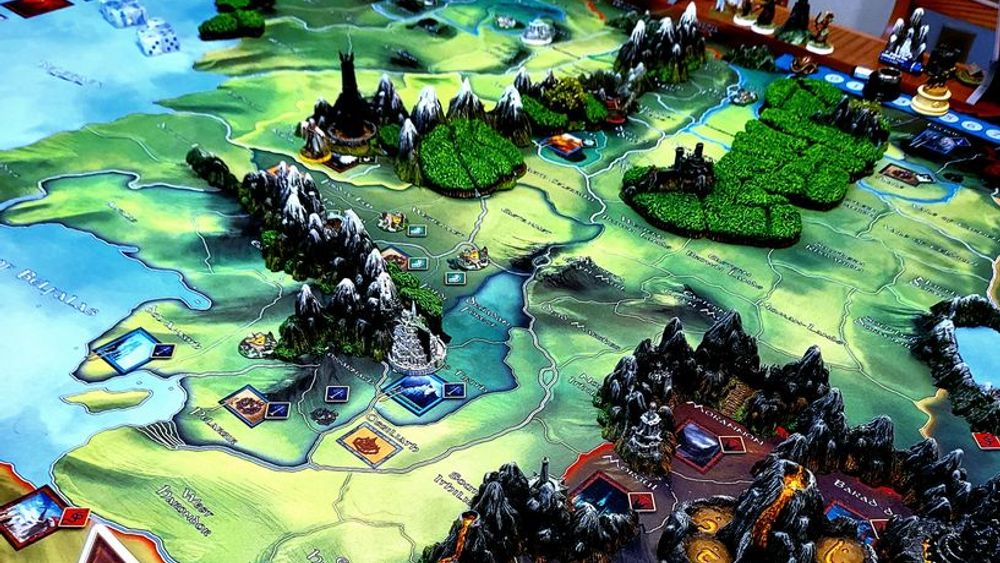
Comparing War of the Ring: Second Edition to Other Strategy Games
Unique Features that Set it Apart
War of the Ring: Second Edition sets itself apart from other strategy games with its epic narrative scope intertwined with deep strategic gameplay. It’s not often that a board game captures the essence of a fantasy saga so completely while also offering a profoundly engaging strategic experience. The asymmetrical nature of the two opposing sides not only reflects the thematic conflict of Tolkien’s world but also provides a distinct playstyle that keeps the game balanced and intriguing.
The dedication to thematic immersion is evidenced by the careful attention to detail in the game’s design, where each mechanic evokes a sense of being part of the epic story. Its remarkable integration of story and gameplay goes beyond the norm, creating not just a contest of tactics and wits, but also a dramatic narrative journey. This extraordinary synergy of theme and strategy is a rare achievement that sets War of the Ring distinctly apart in the world of strategy games.
War of the Ring: Second Edition stands out for its remarkable integration of narrative and strategic gameplay, creating a rare and engaging synergy that sets it apart in the world of strategy games.
War of the Ring vs. Other Tolkien-inspired Games
There’s a trove of Tolkien-inspired games out there, from card games that capture key moments in the saga to complex strategic endeavors. Yet, when it comes to War of the Ring: Second Edition, it shines like the Evenstar amongst them. Other games may let you dabble in parts of Tolkien’s universe, but War of the Ring allows you to experience the full breadth and depth of the epic conflict that defines Middle-earth. It’s not just about battles and points; it’s about the heart of the story – the struggle of the Free Peoples against the overwhelming might of the Shadow.
While some games may focus on specific elements, such as the political intrigue of Gondor or the battle of wits in the Shire, War of the Ring encompasses all these aspects and more. The level of agency players have over the course of the war, the influence of chance through dice, and the strategic complexity offer a richer, more immersive experience. And unlike some card games that focus on deck-building or hand management, War of the Ring demands a panoramic view of the conflict, forcing players to consider everything from the macro strategy of war to the micro tactics of individual skirmishes.
FAQs
1. How long does a typical game of War of the Ring: Second Edition take?
The duration of a typical game of War of the Ring: Second Edition varies, particularly based on player familiarity with the rules, but on average, it spans between 2 to 4 hours. For newcomers, the first session may last longer, including setup and rule explanation, but as players become more experienced, the flow of the game tends to speed up.
2. Can War of the Ring: Second Edition be played with two players?
Absolutely, War of the Ring: Second Edition has been designed primarily as a two-player experience, pitting the Free Peoples against the Shadow armies. It remains balanced and deeply strategic, providing an intense duel that brings Middle-earth’s epic conflict to life on your tabletop.
3. What are the main differences between the first and second editions?
The main differences between the first and second editions of War of the Ring include updated rules and clarifications to streamline gameplay, enhanced components and artwork, and improved game balance. These changes aim to refine the experience, keeping the core of the game intact while enhancing its playability and visual appeal.
4. Are there any expansions available for War of the Ring: Second Edition?
Yes, there are several expansions available that enrich and extend the War of the Ring: Second Edition experience. Expansions like “Lords of Middle-Earth”, “Warriors of Middle-Earth”, and “Kings of Middle-Earth” provide additional characters, factions, and scenarios that add depth and variability to the game.
Conclusion
War of the Ring: Second Edition stands as a monument in the landscape of strategy games, offering an experience unparalleled in its narrative depth and strategic complexity. Reflecting on the times I’ve laid the game out on my table, I’m in awe of its ability to consistently weave stories as intricate and engaging as Tolkien’s own works. Every move feels like it carries the weight of Middle-earth’s fate, making this much more than just a game.
It’s a whirlwind of strategy, chance, and emotional investment that captures the imagination and doesn’t easily let go. Whether you’re strategizing over the map as a conniving Shadow player or feeling the weight of Middle-earth’s hope on your shoulders as the Free Peoples, there are always new strategies to discover, new tales to unfold. And for those looking to dip their toes into the vast ocean of Tolkien’s world through board gaming, War of the Ring: Second Edition offers the full immersion with all its thrills and challenges.
So here’s to all the champions of Middle-earth, the seasoned generals and the aspiring commanders, the Fellowship of gamers gathered around tables worldwide. May your games be as filled with passion and excitement as the ones I’ve cherished. Until next time, keep rolling high, and may the stars of Elbereth guide your path. Fare thee well, and always remember – there is some good in this world, and it’s worth fighting for.
Lucas
More Boardgame Reviews:
This article uses material from BoardGameGeek and is licensed under the Creative Commons Attribution-Share Alike License.

